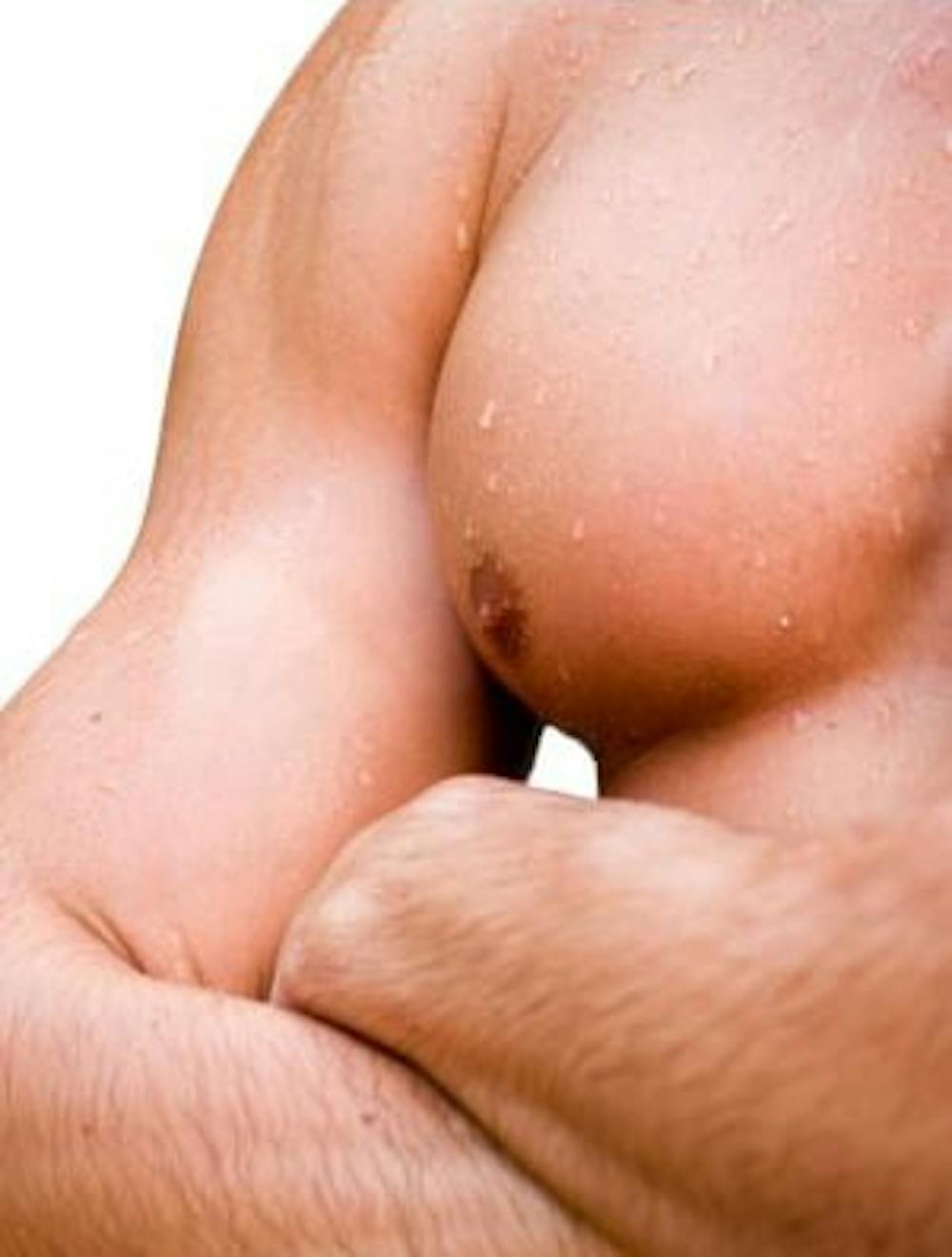
The gynecomastia pinch test is a simple, non-invasive medical test that can be performed to determine whether you have gynecomastia or not. This test can be performed by you or by your plastic surgeon or primary care physician. Then you can consider if gynecomastia in Beverly Hills at Galanis Plastic surgery is right for you?
In the following blog post, we will outline what the pinch test for gynecomastia is, why it’s used, and how to perform it at home. But first, let’s talk about gynecomastia in general, what causes gynecomastia, and what can be done to treat it.
What Is Gynecomastia?
Gynecomastia is the enlargement of the male breasts. It is the most common breast condition in men. Male breast enlargement can be caused by a range of issues, but most cases have to deal with an imbalance of testosterone and/or estrogen.
Testosterone is primarily a male hormone, and estrogen is primarily a female hormone. However, we all have both hormones naturally present in our bodies. When these hormones become imbalanced, however, certain symptoms can arise, including gynecomastia.
What Specifically Can Cause Gynecomastia?
There are a range of conditions that can lead to a hormonal imbalance and later, gynecomastia.
First, natural changes in the body that occur as we age can be linked to gynecomastia. Newborn baby boys actually have a form of gynecomastia because they have what are called breast buds.

This means they have a slight buildup of tissue and fat on their chests, and this is likely caused by the extra female hormones they have in their bodies from being in their mother’s womb. This naturally corrects over time, and the breast buds quickly disappear.
Later in life, when young men go through puberty, they may also experience gynecomastia. It’s very common for pubescent males to have excess breast tissue and fat. Again, this typically goes away on its own.
Next, many illicit drugs, medications, and herbal supplements can contribute to gynecomastia as well. It has been hypothesized, for example, that marijuana can cause gynecomastia. But the condition can also be caused and/or exacerbated by excessive alcohol use, use of steroid drugs, heroin use, and other drug use.
Furthermore, certain medications may lead to gynecomastia. Anabolic steroids and drugs taken for hyperthyroidism, certain cancers, tumors, and other conditions may contribute to gynecomastia.
Finally, some men simply have excess fat and tissue around their breasts, especially when they gain weight overall. This can not only lead to a buildup of tissue and fat around the breasts, but it can also stretch the skin over time, especially if there is significant weight gain.
Determining if You Have Gynecomastia vs Chest Fat
One of the goals of the gynecomastia pinch test is to determine whether you have enlarged male breast tissue (glandular breast tissue) or simply excess chest fat (adipose tissue). Although both can be treated with surgery, your gynecomastia surgeon will likely want to know whether the excess tissue is breast gland tissue or fat alone.
This can be helpful for the surgery itself and what it will involve (liposuction alone vs lipo plus skin excision, etc.). But it can also be helpful for determining the underlying cause of your gynecomastia.
What Is the Pinch Test for Gynecomastia?
To perform the gynecomastia pinch test, follow the steps below:
- First, stand in front of a full length mirror without a shirt on.
- Using your forefinger and thumb, gently touch the area around your nipples and areolae, palpating the breast tissue there. Your nipple should be in between your two fingers, but don’t squeeze too hard. You’re trying to feel the tissue deep beneath and around the areolae and nipples.
- You’ll notice one of two things at this point if you have gynecomastia. First, you may notice that your areolae and nipples are puffy and feel (and look) slightly swollen. You may also notice a hard mass beneath the nipple of one or both breasts. This firm mass can feel like disk shaped tissue, or the firm tissue may be smaller and slightly softer.
Feeling any dense or hard mass may be an indicator of true gynecomastia, though you will want to get an accurate diagnosis. On the other hand, even if you don’t feel denseness or a hard mass, if you are still unhappy with the way your chest looks and feels, there are treatments available.
FAQ: Gynecomastia & Gynecomastia Surgery
Will enlarged breast tissue in men go away on its own?
If you are a man with enlarged breasts, you may have excess adipose tissue (fat), excess glandular tissue, excess skin, or a combination of these.
Depending on what combination you have, sometimes gynecomastia can go away on its own. But often, an intervention such as gynecomastia surgery is needed to correct the issue.
What is a first stage gynecomastia pinch test?
The gyno vs fat gynecomastia pinch test is a self-exam you can perform to determine if you have gynecomastia or just excess fat on your chest.
Some surgeons will divide gynecomastia into grades (stages). Grade 1 (stage 1) is a small amount of excess fat and/or glandular breast tissue without excess skin.
Can gynecomastia lead to breast cancer?
There is no known associated between gynecomastia surgery (excess breast glandular tissue) and breast cancer in men.
Schedule a Consultation with Dr. Charles Galanis
Experiencing male breast enlargement can make many men self conscious and deeply uncomfortable. The condition can be painful and may even lead to psychological issues and complications.
The good news is that you don’t have to live and suffer from enlarged male breasts. Gynecomastia treatment is as simple as male breast reduction surgery, which is certainly surgery, but which is also straightforward, commonly performed, highly successful, and fairly easy to recovery from in almost all cases.
To learn more about gynecomastia plastic surgery procedures and to see if you’re a candidate for gynecomastia surgery, please contact our office today and set up your consultation with board certified plastic surgeon Dr. Charles Galanis.


